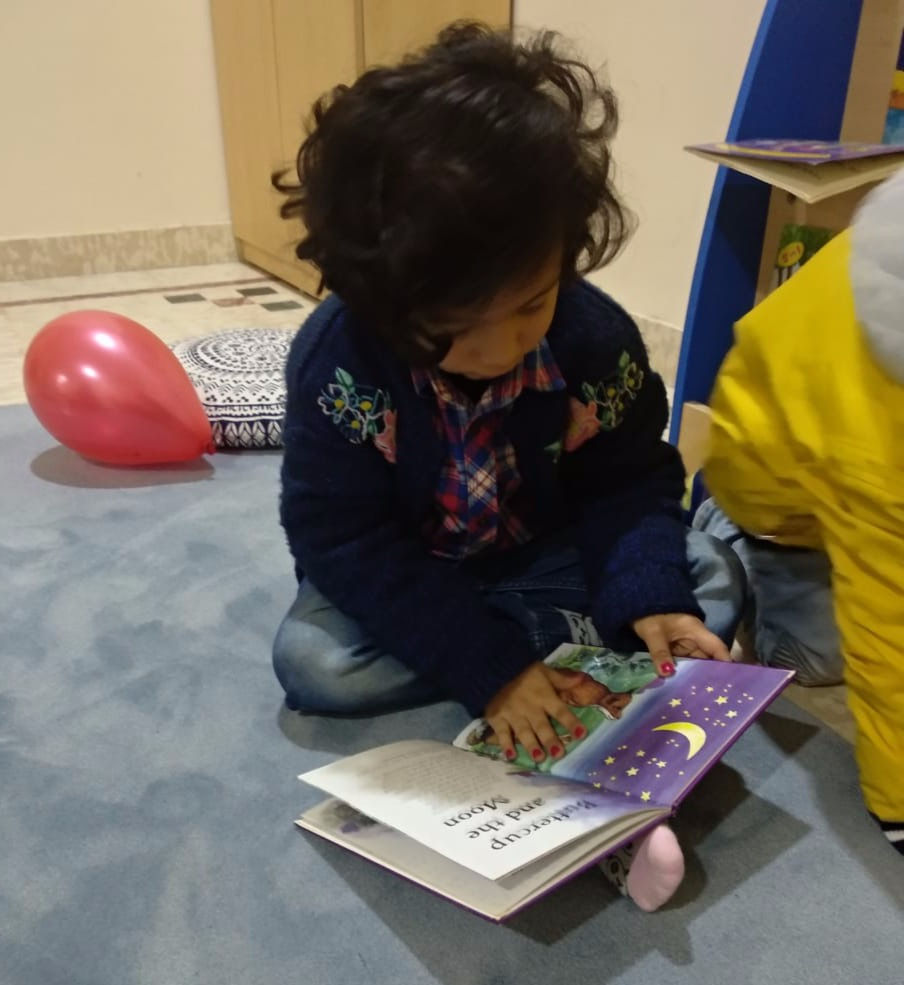Language development in preschoolers
- GulmoharEarlyyears

- Mar 13, 2020
- 2 min read
Updated: Mar 14, 2020
We give a lot of attention to linguistic (reading, writing) and mathematical development in our children. Early childhood is a crucial time creating a foundation of linguistic and mathematical development. A curriculum that fosters language development must approach it as a process, as reading is a complex process involving different parts of the brain. A carefully planned environment is essential for this. Meaningful experiences need to be created, these are mostly rooted in PLAY for young children. This environment involves certain features which are presented below.

Connect with Culture: To find meaning, activities for children should connect them with their culture and community.
Observe the children: Children create their own meaning through invented spelling and symbols. Instead of pressurising them of memorising spelling they should have freedom of expressing their phonetic sounds.
Emotions: A safe environment which allows children to express their emotions is essential. Drilling them with words or having inappropriate expectations from them can have a negative impact.
DEVELOPMENTAL PROCESS: Reading & Writing are developmental, it begins with awareness and exploration in preschoolers (Age: 2-4),where it’s a nice idea to explore them to print environment, letters, sounds and genres. In Phase two (kindergarten): experimental reading and writing should be promoted.
Begin with Stories: Reading and Writing begins with stories and this can’t be stressed enough. Storytelling communicates history, cultural importance and exposes them to the beautiful world of imagination and listening. This brings us to an important question. What kind of stories should you read to your child? Anything from Fairy Tales, Myths and Legends can offer a rich language, sense of history, a sense of place in the world , develop imagination in the child. Nature Stories, stories about children themselves and poems offer appropriate storytelling experiences.
Inspire a reading environment: One can develop reading corners in each class with age-appropriate books. A cozy and accessible environment should be given so children can feel good about a book in the hand. There are numerous sources available who are doing a great job to promote reading in early years. Some of the instagram accounts handle that can recommend age-appropriate books are @growingbookbybook @tokabox @thenestery.in
In a preschool environment, teachers form an important role as they create the supporting environment for the children in a childcare facility. The parents need to be also involved so they can support this learning at home.
TEACHER'S ROLE IN CREATING THE ENVIRONMENT
A teacher is responsible for knowing her children. She has a better idea of what is relevant and necessary for them. How can this be done?
Pick up their interests: Activities should be planned as per their interests and their developmental needs. A Teacher needs to pick up clues from the environment.
Shared language experiences with children: Children are used to being talked at (Do this, Don’t go there, This is right, That is wrong). They are rare opportunities for them to be talked with. Create opportunities so you can talk with children. Story Telling often presents good opportunities to talk with children.
A combined effort of teachers and parents at home can help make a conducive environment for children to read, learn and be effective communicators when it is the most crucial that is in the early years.
#languagedevelopment#earlychildhoodeducation#letthemplay#childdevelopment#childcurriculum#storytelling#preschoolteachers#preschoolers#toddlers

Comments